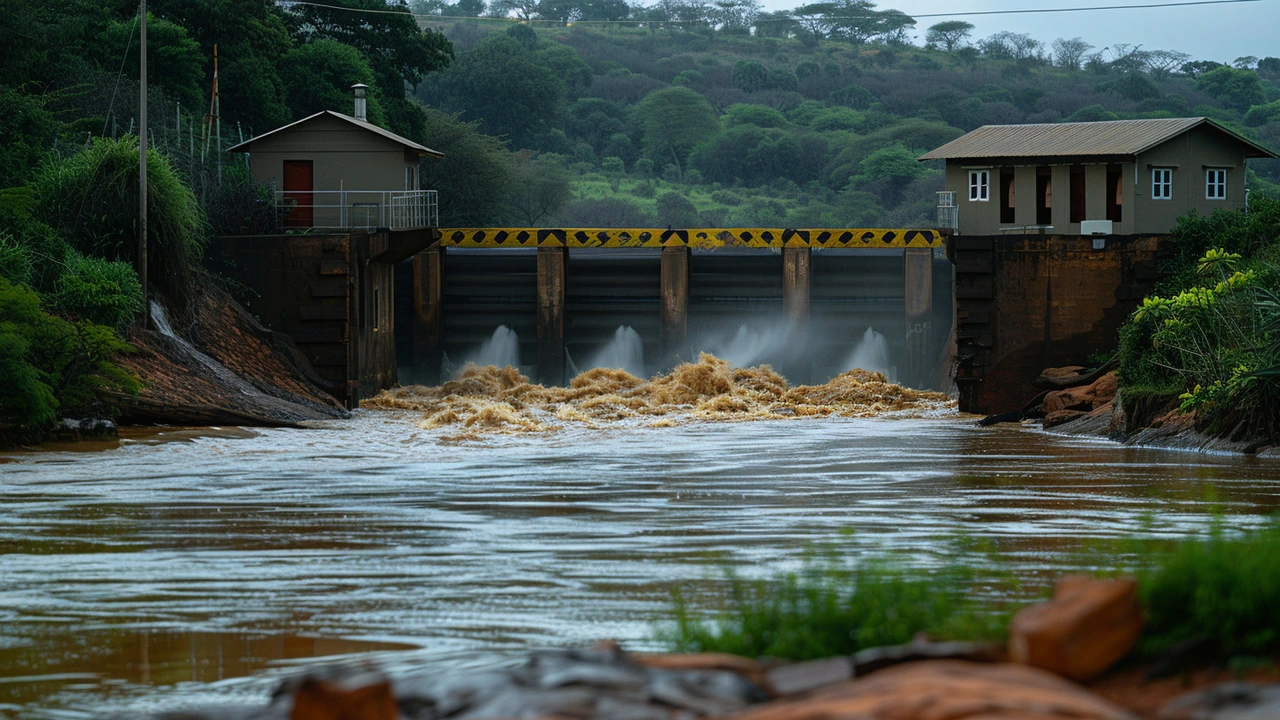
Overview of Kenya’s Extreme Weather Crisis
In recent weeks, Kenya has witnessed an unprecedented escalation in climate-related disasters. The ongoing severe weather conditions, characterized by heavy rainfall and flooding, have wreaked havoc across the nation. As reported, at least 180 people have lost their lives, while 90 others remain unaccounted for. The government has been forced to take dramatic action, ordering evacuations for residents living near a critical number of 178 dams and reservoirs, as the danger of additional flooding looms.
The Immediate Impacts of Flooding
One of the most alarming episodes in the unfolding crisis was the bursting of a dam, which tragically claimed at least 40 lives. Furthermore, this surge has pushed the Masinga Dam, Kenya’s largest hydroelectric power source, to exceed its capacity, setting a new record for water levels. This situation has prompted KenGen, the governmental body in charge of electricity production, to maximize its hydroelectric power output, providing vital electricity to the nation during this challenging time. Despite these efforts, the stability of dam structures remains a critical concern, with ongoing assessments to ensure their integrity.
As the land remains saturated and rivers swollen, the infrastructure faces relentless pressure, heightening the risk of further casualties and damage. Local communities, especially those near water bodies, have been plunged into a relentless fight against rising waters, with homes submerged and properties destroyed.
Preparation for Cyclone Hidaya
The meteorological department has issued warnings about Cyclone Hidaya, which is expected to hit Kenya’s coastal regions imminently. Predictions suggest that the cyclone will bring heavy rainfall, large waves, and powerful winds, severely impacting marine activities and coastal settlements. These conditions are likely to exacerbate the already dire situation, complicating rescue and relief efforts.
Authorities are on high alert, deploying resources and strategies to mitigate the expected impact. The focus is on safeguarding human lives, securing property, and maintaining essential services throughout the duration of the storm. The proactive measures include the distribution of food and non-food items to affected populations, provided by the government and various humanitarian partners.
Government and Community Response
Under the leadership of President William Ruto, Kenya is confronting these environmental challenges head-on. The administration is actively engaging in disaster management, while also advocating for long-term strategies to address the impacts of climate change. Efforts are being made to enhance the country’s resilience through improved infrastructure, community education, and the implementation of sustainable environmental practices.
In addition to immediate relief, there is a concerted push to rally national support for policies that will fortify the country against future climatic adversities. Communities across Kenya are being mobilized to participate in these initiatives, ensuring a unified approach to the environmental crisis.
Looking Forward: Challenges and Calls for Action
The recurring theme of escalating climate events in Kenya calls for a global response to climate change. The current crisis serves as a stark reminder of the urgent need for concerted efforts to reduce greenhouse gas emissions and to implement adaptive strategies that can withstand the impacts of extreme weather events.
Moreover, as Kenya navigates through these tumultuous times, the international community’s role becomes increasingly crucial. Support in terms of technical expertise, financial aid, and global cooperation will be essential in helping not only Kenya but also other vulnerable regions around the world to better prepare for and respond to natural disasters.
It is a pivotal moment for Kenya and the world to reassess and reinforce the commitment to environmental stewardship and sustainable development. Only through collaborative efforts can we hope to mitigate the detrimental effects of climate change and safeguard future generations.





